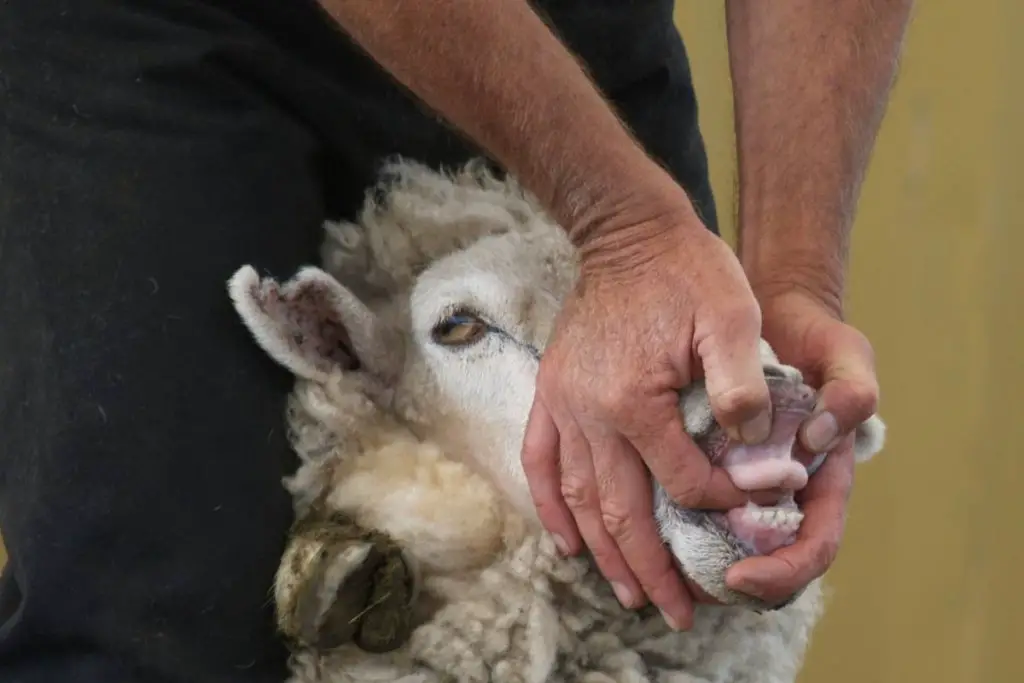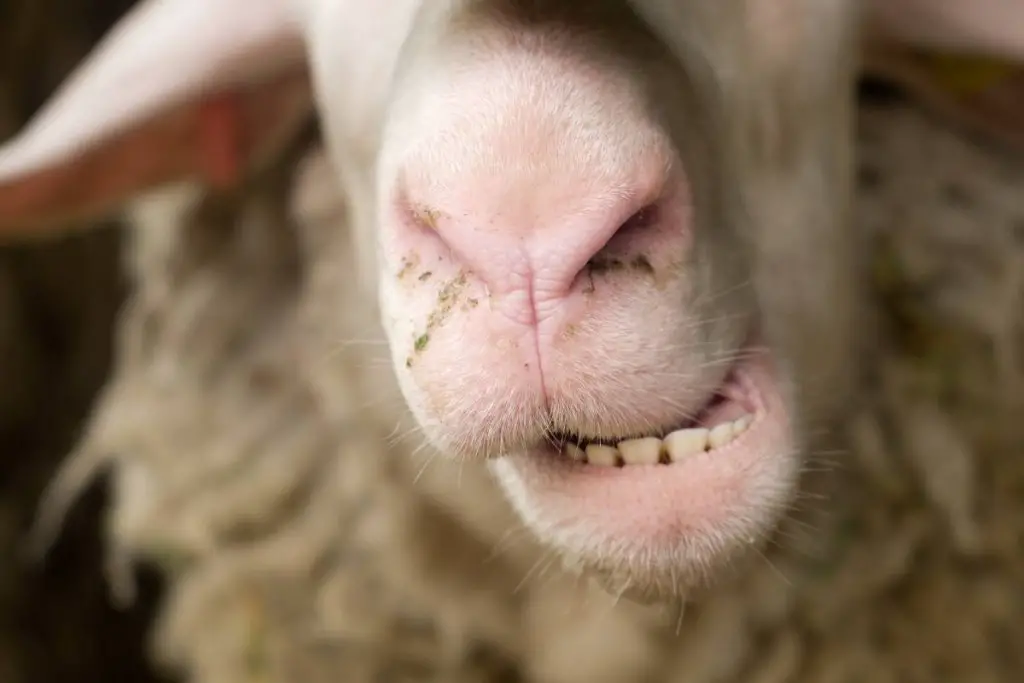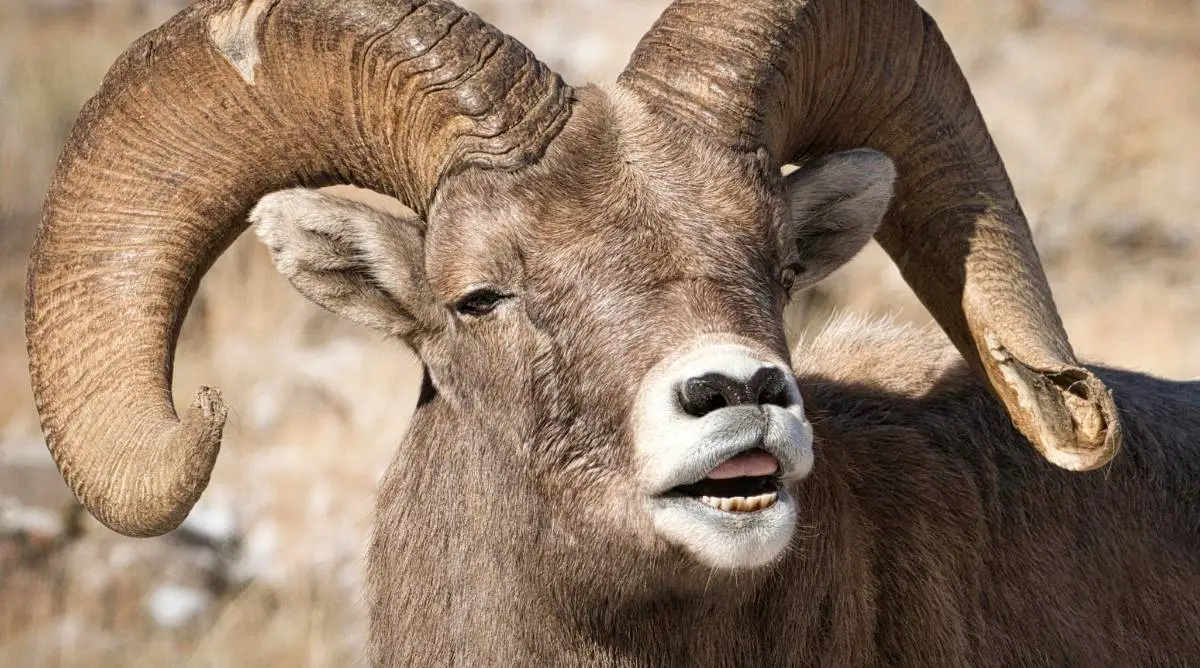Sheep don't have top front teeth, but they do have top teeth in the back of their mouths. Sheep have a dental pad instead of top front teeth, like other cud-chewing ruminant animals. While lambs are usually born without teeth, adult sheep have 32 teeth—eight incisors on the bottom jaw, 12 premolars, and 12 molars.
Table of Contents
Do sheep have top teeth?
Sheep don’t have front top teeth. They have a dental pad instead of top teeth in the front of their mouth.
However, they do have top teeth in the back of their mouth.
How many teeth do sheep have?
Sheep have 32 teeth split between three types: incisors, premolars, and molars. They don’t have canines.
A sheep’s incisors are also called “cutting teeth” due to their function of cutting and biting feed. Premolars and molars are referred to as “cheek teeth,” and their primary purpose is chewing grass.
Most lambs are born toothless. Some are born with tiny teeth, but they usually begin to grow milk teeth (temporary teeth) in the front lower jaw in the first week of life. By two months of age, a lamb grows eight milk teeth. Those are later replaced by permanent incisor teeth.
Adult sheep have 32 permanent teeth: eight incisors in the lower front jaw, 12 premolars, and 12 molars. Premolars and molars are located on each side of the upper and lower jaws, three of each.
What is a sheep dental pad?

A sheep dental pad is a flat thickened tissue at the top of a sheep’s mouth.
It makes it easier for sheep to grab onto grass and other plants while bottom teeth cut the forage. The tongue then pushes the feedstuffs to the cheeks and the sheep starts chewing using premolars and molars.
Why don’t sheep have teeth in the front part of the top of their mouth?
The advantage of a dental pad is that it works together with the animal’s lower front incisors to help with grazing on ground-based plants.
If sheep were to have top front teeth, it would be harder to pull plants out.
Using teeth to tell the age of a sheep

It’s possible to estimate a sheep’s age by looking at its teeth.
One common method is to check how many permanent incisors it has.
- Baby sheep typically grow eight milk incisor teeth from one to two weeks of life. Incisors are small and sharp in lambs younger than one year of age.
- One year old: One year old sheep have a permanent middle pair of incisors.
- Two years old: By age two, there are two pairs of permanent incisors.
- 3-4 years old: During the third and fourth years, all milk teeth are replaced by permanent teeth.
- Five years old: Common teeth problems (breaking, spreading apart, falling out) start occurring after the fifth year.
- 8-12 years: Older sheep usually have a “broken mouth” with worn out or missing teeth and receding gum lines. If a ewe loses all her teeth, grazing becomes extremely difficult. She isn’t able to maintain her weight and may need to be removed from the flock.

